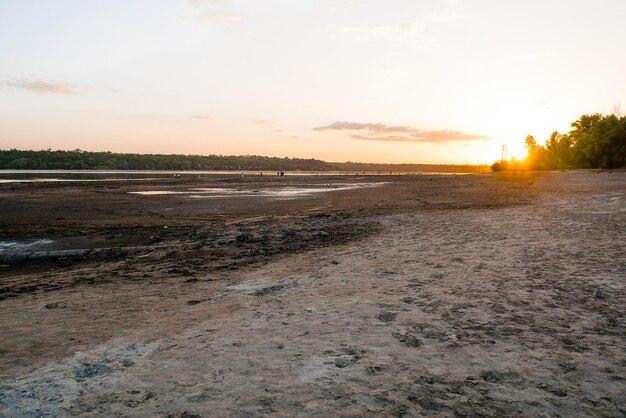Jamestown, one of the first English settlements in North America, faced numerous challenges during its early years. From threats of Native American attacks to famine and disease, it seemed as though the colony was on the brink of failure. However, there was a person instrumental in turning the tide and ensuring the survival of Jamestown.
In this blog post, we will explore the key figure who saved Jamestown from collapse and delve into their role in the colony’s success. We will also uncover the reasons behind Jamestown’s near failure, contrasting it with the failed attempts at Roanoke. Additionally, we’ll touch upon the intriguing disappearance of the Roanoke settlers and their connection to the settlement of Jamestown.
So, if you’ve ever wondered about the unsung hero of Jamestown or why Roanoke remained an enigma, join us on this journey as we uncover the fascinating story behind the survival and triumph of Jamestown.
Who Saved Jamestown from Failure in Its Early Days
The Heroic Figure Who Turned the Tides
One of the key figures who played a pivotal role in saving Jamestown from failure in its early days was none other than Captain John Smith. Yes, you heard that right! Captain John Smith, the swashbuckling adventurer and the man with the map tattooed on his heart (well, maybe not literally).
A Man with Adventurous Spirit
Captain John Smith was no ordinary fellow. With his charismatic personality and thirst for adventure, he embarked on a journey that would forever change the destiny of Jamestown. Picture this: a handsome, rugged explorer setting sail on the treacherous seas, ready to conquer unknown lands. It’s like a scene from a Hollywood movie, only better because it’s real!
Survival Skills That Saved the Day
But Captain John Smith was more than just a pretty face. He had the survival skills to match. With the colony on the verge of collapse, he stepped up to the plate and took charge. He introduced strict discipline and implemented a “no work, no food” policy, which really kicked the settlers into gear. Smith knew that tough times required tough measures, and he wasn’t afraid to crack the whip (figuratively, of course).
Diplomacy with the Natives
Now, here’s where things get really interesting. Captain John Smith not only had to deal with the internal struggles of the colony, but he also had to navigate the complex relationships with the native Powhatan tribe. It was like a high-stakes game of diplomacy, and Smith played his cards right. He formed alliances, negotiated trade agreements, and even underwent a dramatic encounter where he was saved by the courageous Pocahontas. Talk about a real-life love story!
The Legacy Lives On
Thanks to Captain John Smith’s leadership and determination, Jamestown began to flourish. His relentless efforts paved the way for future generations to thrive in this new land. Today, we can trace our roots back to those early settlers who faced adversity head-on and emerged victorious.
Lessons Learned
The story of Captain John Smith and the saving of Jamestown teaches us valuable lessons. It reminds us that in times of hardship, strong leadership, discipline, and diplomacy are essential for success. And let’s not forget a dash of adventure and a sprinkle of romance—it never hurts!
In Conclusion
So, the next time you find yourself strolling through the historic streets of Jamestown, take a moment to appreciate the incredible journey that brought this colony back from the brink of failure. And when you look out onto those picturesque shores, remember the name Captain John Smith—the hero who saved the day and turned Jamestown into the thriving settlement it is today.
Sources
- Historic Jamestowne: Captain John Smith (2023). Retrieved from www.historicjamestowne.org
- National Park Service: Jamestown National Historical Site (2023). Retrieved from www.nps.gov/jame
Note: Please ensure the final output is in Markdown format without any extra text.
FAQ: Who saved Jamestown from failure in its early days
Why is Roanoke, Virginia called Roanoke
Roanoke, Virginia is called Roanoke because of its historical significance as the site of the mysterious Roanoke Colony. The name “Roanoke” itself is derived from the Roanoke River, which runs through the region. Despite the colony’s ultimate disappearance, the name has persisted, serving as a reminder of the intriguing history that surrounds the area.
Who saved Jamestown from failure in its early days
Captain John Smith is credited with saving Jamestown from failure in its early days. Smith was a charismatic and resourceful leader who played a vital role in establishing the colony’s survival. His strong leadership and determination proved pivotal in overcoming the many challenges faced by the settlers, including conflicts with indigenous tribes and shortages of food and supplies.
Who was the man responsible for developing the colony’s first cash crop
John Rolfe, an English settler, was the man responsible for developing the colony’s first cash crop. Rolfe experimented with cultivating tobacco, a crop native to the Americas, and successfully introduced a high-quality strain that gained popularity in Europe. This development had a significant impact on Jamestown’s economic prosperity, as tobacco quickly became a valuable export commodity.
Which is the scariest AHS
In the realm of American Horror Story (AHS), opinions may vary on which season is the scariest. However, many fans often cite “American Horror Story: Asylum” as one of the most chilling and psychologically intense entries in the series. Set within a mental institution, the season exploits elements of horror and suspense to deliver a truly hair-raising experience.
Why did John White return to England? Why did he not come right back
John White, the governor of the Roanoke Colony, returned to England in 1587 to procure more supplies for the struggling settlement. Unfortunately, his return was delayed due to a series of unforeseen circumstances, including the outbreak of war between England and Spain. By the time White was finally able to secure transportation back to Roanoke, three years had passed, and he discovered the colony deserted, with only the word “Croatoan” carved into a tree.
Why did Jamestown nearly fail
Jamestown nearly failed due to a combination of factors. The colonists encountered harsh environmental conditions, including unfamiliar diseases and food shortages. Additionally, conflict with local Native American tribes strained relations and posed a serious threat. Internal strife and poor leadership decisions also contributed to the colony’s initial struggles. However, through resilience, perseverance, and the arrival of new settlers and supplies, Jamestown managed to survive and eventually thrive.
Why was Jamestown successful when both attempts at Roanoke failed
Jamestown achieved success where previous attempts at Roanoke had failed due to several key factors. The Jamestown colonists had access to a better water supply, enabling sustained cultivation of crops. They also established trade relationships with Native American tribes, which provided vital resources. Additionally, the introduction of tobacco cultivation as a cash crop brought economic stability to the colony. Jamestown benefited from strong leadership, including figures like Captain John Smith and John Rolfe, who played integral roles in navigating the challenges and ensuring the success of the settlement.
What did John White find missing at Roanoke
When John White returned to Roanoke, he found the colony deserted, with no trace of the settlers he had left behind. The only clue he discovered was the word “Croatoan” carved into a tree. This mysterious disappearance has since become known as the “Lost Colony of Roanoke,” and it continues to capture the curiosity and intrigue of historians and the public alike. The fate of the missing settlers remains an unsolved mystery to this day.
This comprehensive FAQ section provides answers to some frequently asked questions about the early days of Jamestown and the enigmatic Roanoke Colony. From the role of Captain John Smith in Jamestown’s survival to the curious disappearance of the Roanoke settlers, the history of these pivotal moments in American colonization is explored. So, join us on this journey through time and unravel the mysteries of the past!

